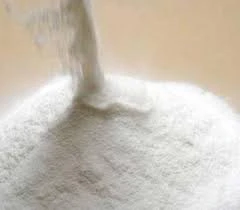The Role of Meilose HPMC in Food and Pharmaceutical Industries
In recent years, hydroxypropyl methylcellulose (HPMC), commonly marketed under the brand name Meilose, has gained significant attention in both the food and pharmaceutical industries. As a versatile and multifunctional polymer, Meilose HPMC has properties that make it an essential ingredient in various applications. This article explores the characteristics, benefits, and uses of Meilose HPMC in different sectors.
What is Meilose HPMC?
Meilose HPMC is a cellulose derivative synthesized from natural cellulose. Through a series of chemical reactions, hydroxyl groups are subjected to modification, resulting in a compound that exhibits unique functionalities, such as water solubility, viscosity, and film-forming ability. These properties make Meilose an ideal candidate for numerous applications, particularly in the formulation of food products and pharmaceuticals.
Characteristics of Meilose HPMC
One of the primary attributes of Meilose HPMC is its ability to retain water while providing desirable textures and consistencies. This water retention capability not only enhances the mouthfeel of food products but also plays a crucial role in extending their shelf life. Furthermore, Meilose HPMC is non-toxic, odorless, and tasteless, making it suitable for various culinary applications without altering the sensory properties of the final product.
Another important characteristic is its thermal stability. Meilose HPMC remains stable over a wide range of temperatures, which is particularly beneficial during cooking or processing. Additionally, due to its film-forming properties, it can create protective barriers that help in moisture retention and provide a unique texture to food products.
Applications in the Food Industry
In the food industry, Meilose HPMC is widely used as a thickening agent, emulsifier, stabilizer, and texturizer. Its thickening properties are particularly advantageous in sauces, soups, and dressings, where it improves viscosity and texture. Moreover, Meilose HPMC can help stabilize emulsions by preventing the separation of oil and water, ensuring a consistent product.
meilose hpmc

Another significant application is in baked goods. The addition of Meilose HPMC can enhance the softness and elasticity of bread, extend freshness, and even improve the overall appearance. In gluten-free products, Meilose can help replicate the structure provided by gluten, making it an invaluable ingredient for those with dietary restrictions.
Additionally, Meilose HPMC finds utility in the production of low-calorie and reduced-fat products, as it can compensate for the loss of texture and mouthfeel typically associated with the absence of fats. Its role in fat replacer formulations allows manufacturers to cater to health-conscious consumers without compromising on taste or texture.
Applications in the Pharmaceutical Industry
The pharmaceutical sector has also embraced Meilose HPMC due to its versatility and efficacy. It is commonly used as a binder, coating agent, and controlled-release component in tablet formulations. As a binder, Meilose HPMC enhances the mechanical strength of tablets while ensuring uniform distribution of active ingredients.
Coating with Meilose HPMC provides a protective layer that can mask the taste of bitter drugs, improve the stability of sensitive compounds, and control the release rate of the active ingredients. This makes it particularly valuable in the development of sustained-release formulations, allowing for prolonged therapeutic effects with reduced dosing frequency.
Moreover, Meilose HPMC is utilized in the development of hydrophilic matrices for sustained-release tablets, which can control the release rate of the drug over an extended period. This is crucial for patients requiring stable blood levels of medication without the need for frequent dosing.
Conclusion
With its unparalleled versatility and unique properties, Meilose HPMC serves as a valuable ingredient across various industries. Its applications range from enhancing the sensory attributes of food products to providing critical functionalities in pharmaceutical formulations. As demand for healthier and more effective products continues to grow, the significance of Meilose HPMC is likely to expand, promising innovation and improvement in both food and pharmaceutical applications.
-
A Comprehensive Guide to Methyl Ethyl Hydroxyethyl Cellulose: Applications and Industry InsightsNewsNov.24,2025
-
Understanding Methyl 2 Hydroxyethyl Cellulose: Uses, Benefits & Industry InsightsNewsNov.24,2025
-
Hydroxyethyl Methyl Cellulose HEMC: Industrial Uses, Benefits & Future TrendsNewsNov.23,2025
-
HEMC Cellulose: Versatile & Sustainable Industrial Polymer | YoungcelNewsNov.23,2025
-
Methyl Hydroxyethyl Cellulose: Versatile Building Block for Industry & SustainabilityNewsNov.23,2025
-
CAS 9032 42 2: Understanding Polyvinyl Alcohol's Impact on Industry & SustainabilityNewsNov.22,2025




